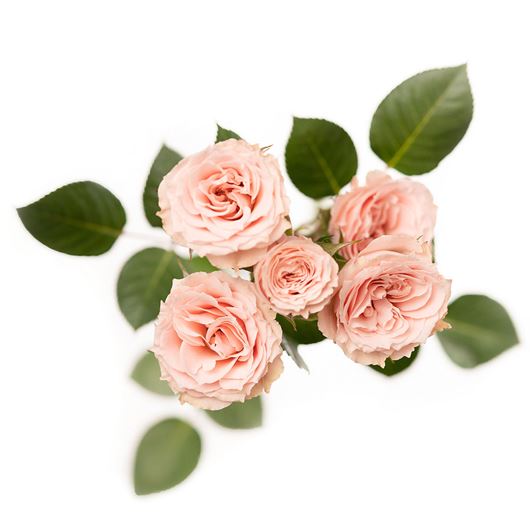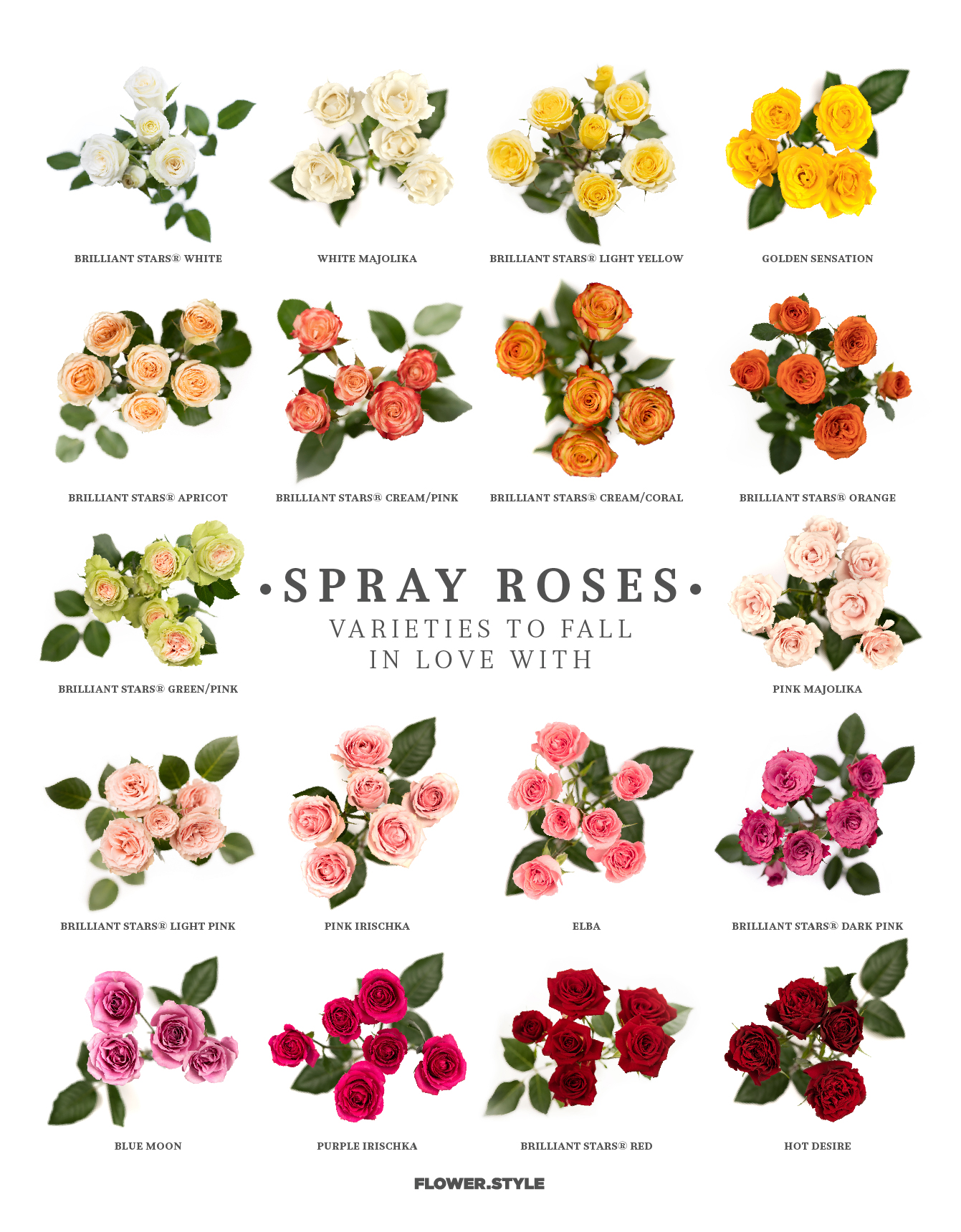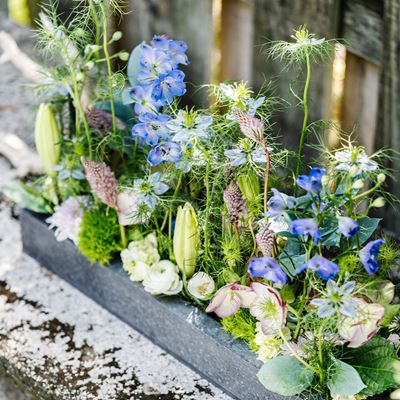Completing our 2023 lookbook series, our sixth and final trend, ATMOSPHERIC, pays homage to our planet's habitats at large. This trending macro view gathers an immersive palette of cool hues, borrowed from the oceans and forests, and pairs it with glowing bright white.
Spray Roses: Branching Out With Multiple Blossoms for Maximum Impact
Tracing back over 35 million years, the Rosa genus is as diverse as it is ancient. Its over 20,000 cultivars (3,000 of which are commercially grown) range from sprawling bushes with simple, five-petaled blooms to luxuriant nests of endlessly unfurling petals. As the world's most popular cut flower, the seemingly-endless availability of roses means that there is a variety to satisfy virtually any taste. And while most flower enthusiasts are already familiar with the classic, long-stemmed version, today we shift attention to its smaller, more dainty kin: the spray rose.
Spray roses (sometimes known as sweetheart roses, but for veteran designers, sweethearts are just a much smaller type of hybrid tea) have unique characteristics that make them ideally suited for use in a plethora of small or large-scale design projects. Unlike hybrid tea roses, which feature one bloom per stem, spray roses are multi-flowered; clusters of three to five miniature blooms—in various stages of maturity—branch off of a single stem, which are typically slimmer and shorter in length than hybrid teas. These florets come in a generous assortment of colors, offering volume and a lush appearance to mixed arrangements or bouquets.
Beyond their bloom size, spray roses can be also classified by their number of petals: singles, with four to eight petals per bloom; semi-doubles, with 12 to 25 petals; and doubles, with 25 to 45 petals. In contrast to their smaller relatives, hybrid tea roses can generate blooms over five inches in diameter, with many cultivars producing up to 60 petals on a single stem.
Although traditional hybrid tea roses are oftentimes the go-to choice for special occasions, spray roses remain incredibly attractive for use in floral decor, especially in instances—such as posy bouquets or corsages—where larger roses are too overpowering. They may be small, but their beauty and soft elegance pack a big punch.











